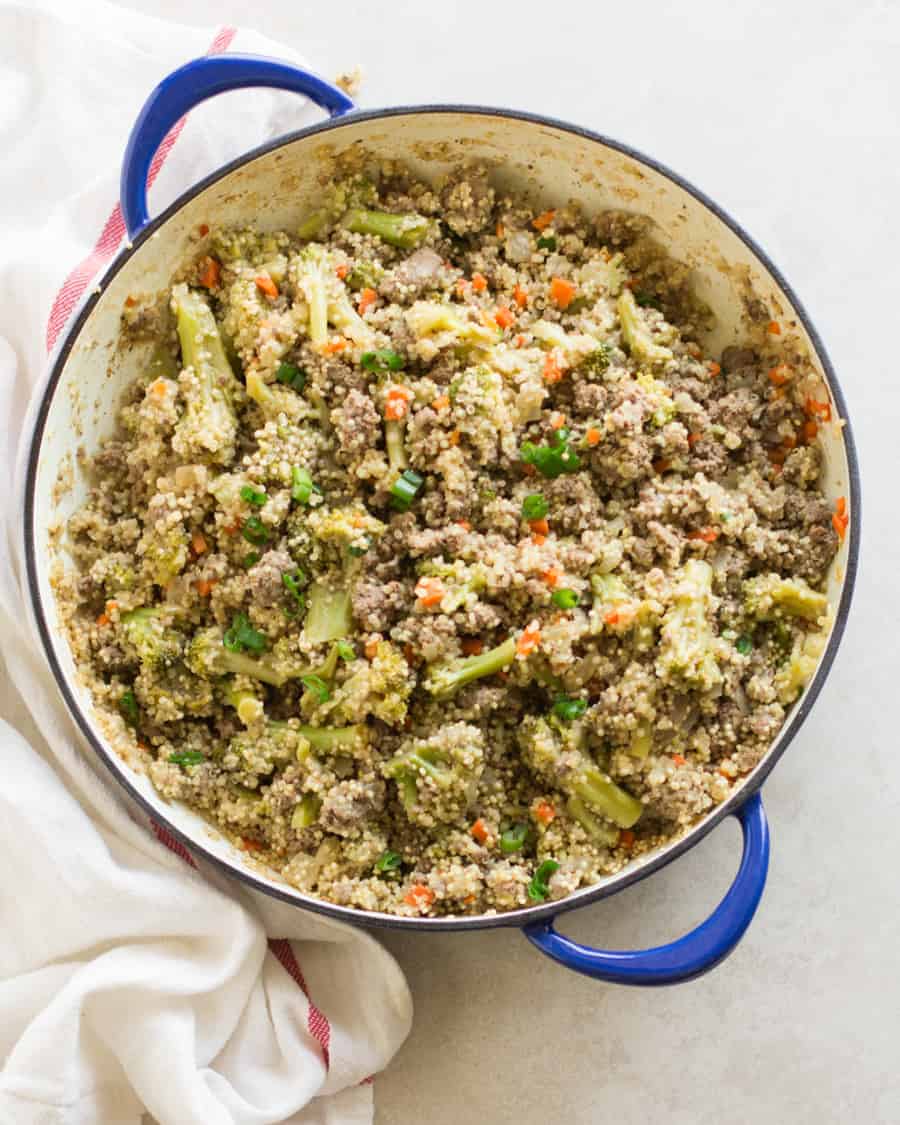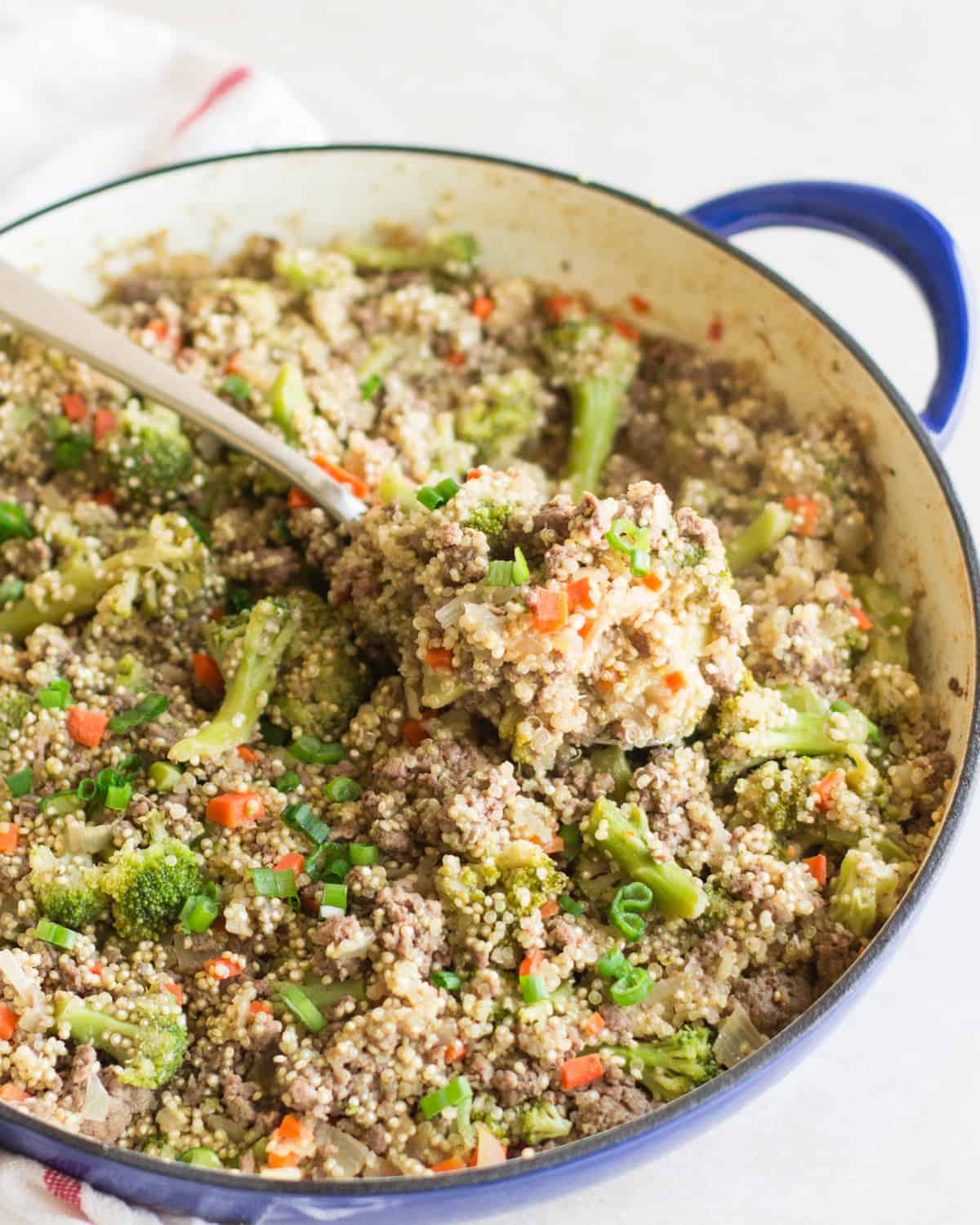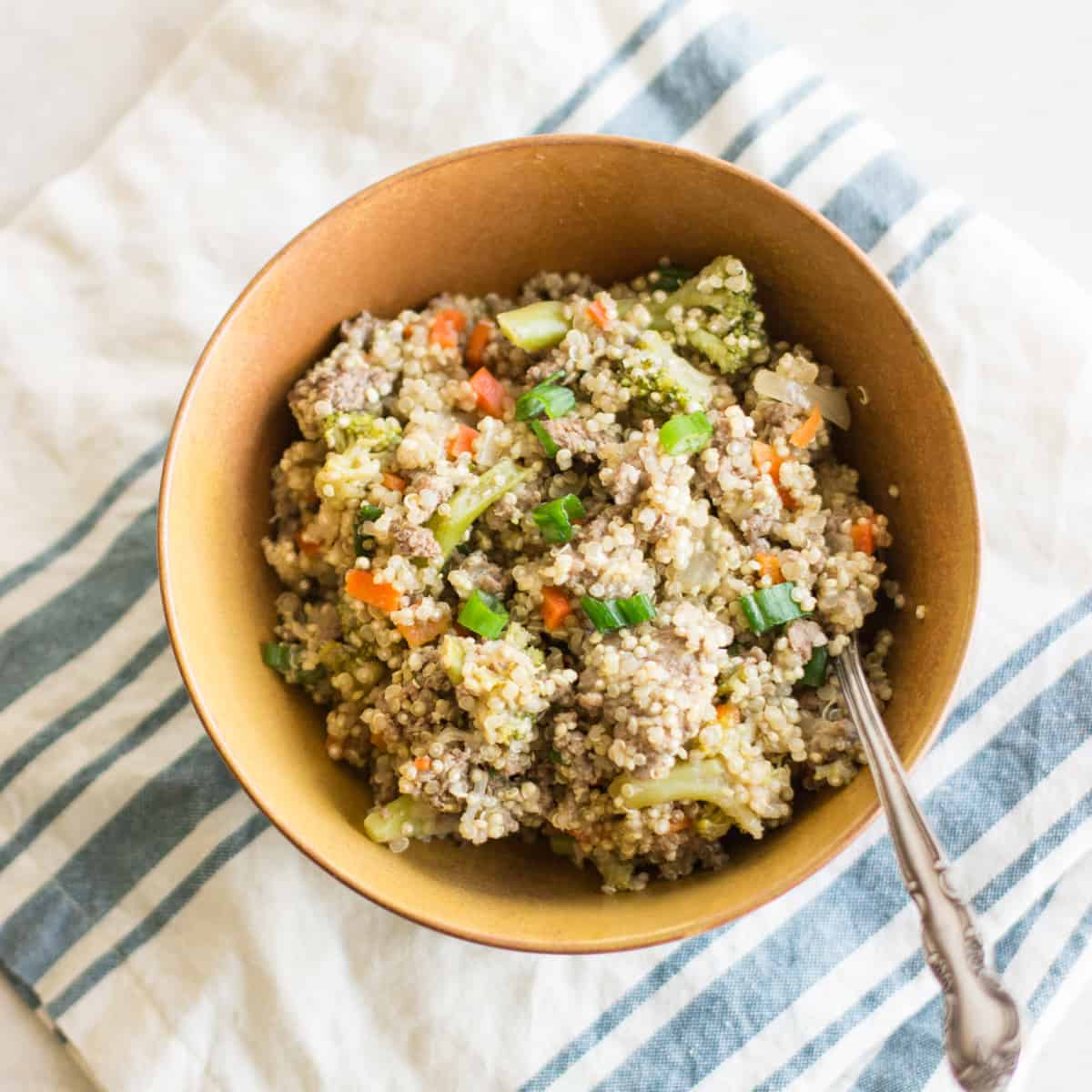Low sodium Asian recipe for babies
A couple of months ago, I asked over on Instagram what recipes you guys would like to see more of, and the top requests were low-sodium Asian food recipes and Asian meals that don’t involve rice. It’s great to see so much awareness surrounding your baby’s sodium intake and rice. However, it certainly makes my task very challenging as the majority of Asian dishes are quite high in sodium and involve lots of rice. So after wracking my brain for quite some time, a lightbulb turned on – a baby-friendly version of Korean beef rice bowl using my bulgogi sauce recipe with no added sodium and swapping out the rice with quinoa! And because I’m sure I’m not the only one who hates doing dishes, let’s go ahead and make it a one pot meal! I developed this recipe a month ago. How QUICKLY things have changed since then. Fast forward to now. When the stores are bare and trips to the grocery stores have halted, food..any food is nourishment. This is not the time to be feeling guilty about purchasing conventional, canned, processed, etc. items. We’re in survival mode. Grab what you can. Let’s make do with what we have! We’re eating a ton of rice around here and convenient items. Now, one caveat I want to add, though. If you have a baby, continue to be mindful of their sodium intake bc their kidneys cannot handle too much. What I advise you to do is to set a portion aside for your baby and then add any high-sodium ingredients, like sauces, for the rest of the family. I still decided to share this recipe at this time because it so happens that it uses a lot of the ingredients that you probably have in your pantry or freezer at the moment. I will add suggestions below on how to tweak this recipe if you don’t have some of them.
Cook’s Tips
To save time the day of, you can make the bulgogi sauce ahead of time and store in the refrigerator (3-5 days). To add or not to add soy sauce to the bulgogi sauce: If serving to older kid(s), you can add 1-2 tablespoons of low-sodium soy sauce to the original bulgogi sauce recipe. Otherwise, set aside a portion for your baby and add some soy sauce at the very end. Honestly, you can add a little bit to the sauce even when serving to your baby. Remember the amount is distributed throughout the entire dish and your baby will eat only a small portion of it. Nonetheless, I always like to give you options! You can use ground chicken or turkey if you wish. You can also use a different cut of meat besides ground. If you go to an Asian grocery store, you can find ones labeled. “bulgogi meat.” If you can’t find it, just be sure to slice your meat very thinly. Tip: Freeze the meat for about 2 hours or so. And working with a sharp knife, slice thinly (about 1/8 inch or so) across the grain. While I used frozen broccoli, you can certainly use fresh.
Ingredient Substitutions
For the marinade: Fresh apples and pears may be hard to come by at this time. Try using 1/3-1/2 cup of applesauce (unsweetened, if possible) instead. No broccoli? Feel free to add whatever vegetable(s) you have on hand, frozen or canned is fine. No quinoa? I’m unsure of this one as I haven’t personally tried it. I do believe any grain will work. You will need to adjust the liquid amount and cooking time accordingly. If you want to use pasta, I’d cook it separately and then stir it into the mixture. P.S If you happen to have cooked quinoa on hand, be sure to give these vegan muffins a try! A note on broth: The recipe calls for 2 cups of low-sodium beef broth. If you’re like me and are trying to stretch out some of the essentials, swap out 1 cup of broth with water.
Other Baby-Friendly Ground Beef Recipes
Baby-Friendly Korean Bulgogi Veggie-loaded Meat Sauce Beef and Vegetable Stuffed Shells Mini Shepherd’s Pie Muffins Baked Quinoa Meatballs





